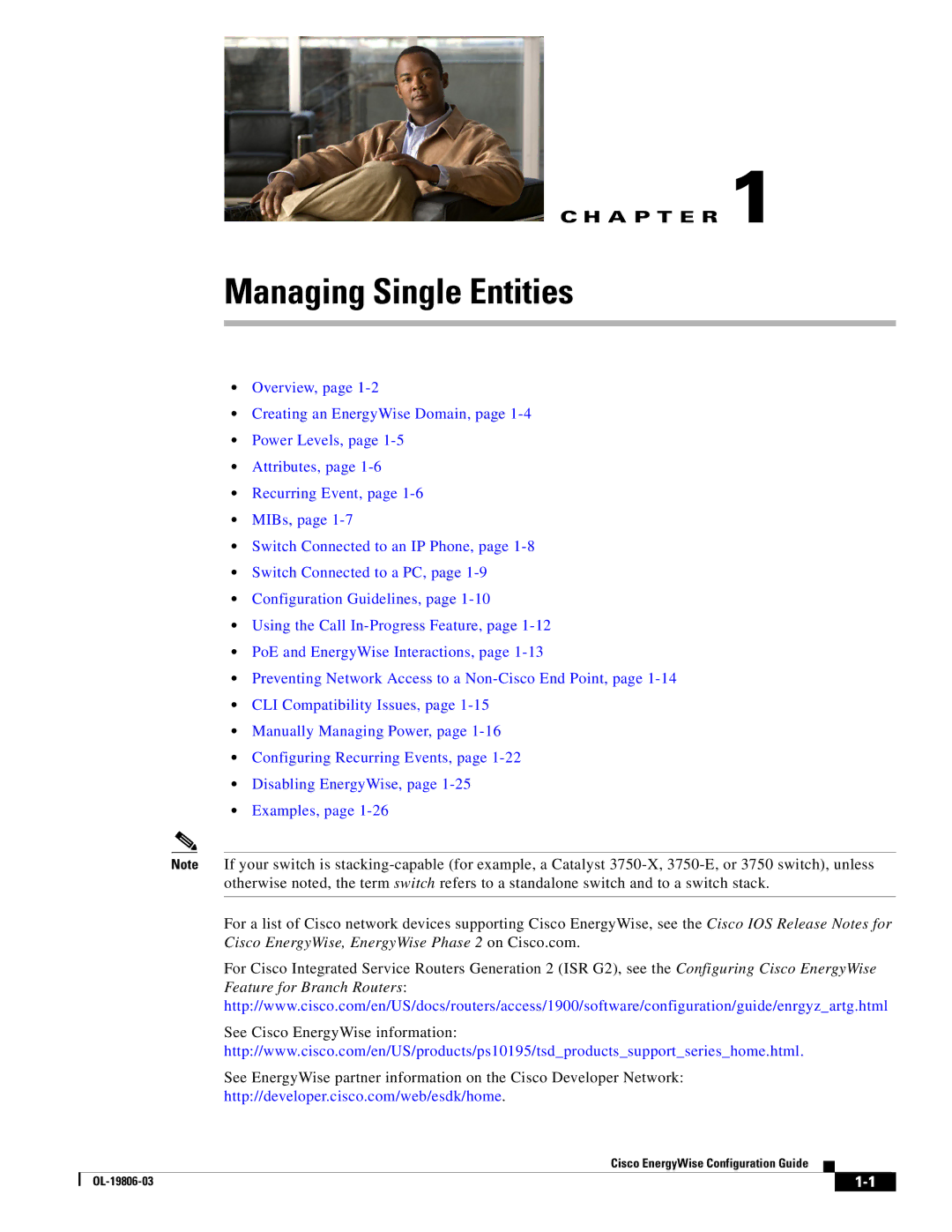
C H A P T E R 1
Managing Single Entities
•Overview, page
•Creating an EnergyWise Domain, page
•Power Levels, page
•Attributes, page
•Recurring Event, page
•MIBs, page
•Switch Connected to an IP Phone, page
•Switch Connected to a PC, page
•Configuration Guidelines, page
•Using the Call
•PoE and EnergyWise Interactions, page
•Preventing Network Access to a
•CLI Compatibility Issues, page
•Manually Managing Power, page
•Configuring Recurring Events, page
•Disabling EnergyWise, page
•Examples, page
Note If your switch is
For a list of Cisco network devices supporting Cisco EnergyWise, see the Cisco IOS Release Notes for Cisco EnergyWise, EnergyWise Phase 2 on Cisco.com.
For Cisco Integrated Service Routers Generation 2 (ISR G2), see the Configuring Cisco EnergyWise Feature for Branch Routers: http://www.cisco.com/en/US/docs/routers/access/1900/software/configuration/guide/enrgyz_artg.html
See Cisco EnergyWise information:
http://www.cisco.com/en/US/products/ps10195/tsd_products_support_series_home.html.
See EnergyWise partner information on the Cisco Developer Network:
http://developer.cisco.com/web/esdk/home.
Cisco EnergyWise Configuration Guide
|
| ||
|
|
